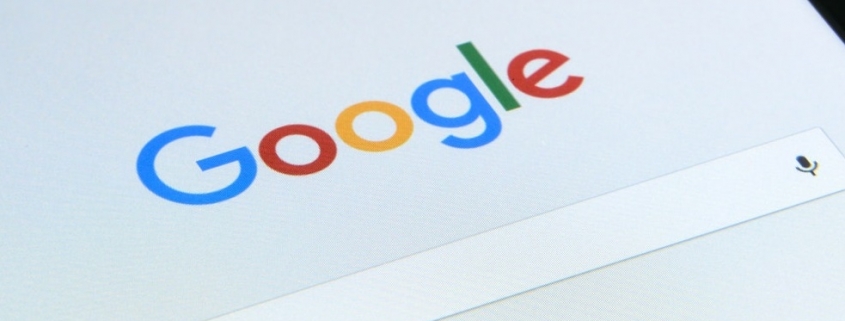It is a case in point that brand managers and consumers – but also marketing and advertising managers – all have their sights on the same goal: to come into contact with one another at the right time, in the right place and with the right message. The problem is that they all take widely different approaches and that companies rarely carry out real-time evaluations of the data necessary for this.
Consumers looking for specific products or services expect treatment to be as personalised as possible – and, of course, for this to be available at all times, on all available devices and all possible channels. The proverbial “customer journey” has not been following a straight path for some time now. After all, there are endless possibilities for customers to strike up contact with the various companies. They can approach the brands directly or do so indirectly, for example via performance marketing channels such as price comparisons or social media platforms. The upshot of this is that the labyrinthine customer journey throws up more and more purchase process-related data. Marketers, on the other hand, want to understand and reach digital customers but naturally always have their own ROI in the back of their minds. Accordingly, they pursue a strategy that makes the most of their marketing budget. To do so, however, they must first find their way through the data jungle. And the ever-growing volume of data is making it more and more difficult for them to find the right information at the right time.
The golden growth years are over
For the most part, the vast bulk of the constantly collected data ends up gathering dust in a virtual drawer somewhere. Particularly in marketing, endless amounts of user data are collected with a view to tailoring a personal marketing campaign geared as closely as possible towards each individual shop or website visitor. At present, however, many marketing departments are still failing to apply any coherent strategy to this data and only analyse and contextualise it on rare occasions. Which in turn means that the data rarely points the way to clear optimisation measures and follow-ups. Before you start amassing data without any clear plan in mind, you should ask yourself a few questions:
- Do I really need a constant supply of new data to run successful marketing campaigns?
- At what point should I start collecting data and at what point should I stop again?
- How can data be used in decision-making?
- And what data is actually needed to manage campaigns successfully?
To begin with, the somewhat sobering answer to all these questions is that data collection will never stop. It is more a question of making better use of the (available) data. Which means that marketers should realise that the golden years of online retailing are over and that they need to come up with a decent data strategy. When it first emerged, the online market was able to chalk up rapid growth. In most cases, however, this was generated automatically given that a new market was effectively created, with consumer behaviour shifting online. These days, online sales are still on the rise, but growth is nothing like it was in the early days. This is because users are already online and the market is becoming increasingly saturated. And now everyone is vying for a slice of the pie! Accordingly, online players who want to remain at the head of the pack need to have more than creative campaigns in their box of tricks. After all, market saturation essentially means that all market participants currently have the same starting position. Which, above all, means that a clever data strategy can give players a significant competitive edge.
Data collection will never stop. It is more a question of making better use of the (available) data.
Sharing data across departments
And the good news? The first step towards a successful data strategy can be taken with an initial inventory of available data. Existing customer data is particularly valuable because it provides important information about purchase behaviour, frequency of visits and/or shopping, and the contents of customers’ shopping carts.
For companies, data that already exists forms the basis for targeting consumers with individualised advertising at a later stage. Here, it is important to compare existing data with other departments and to identify any overlaps. Regrettably, it is often the case that a company’s left hand doesn’t know what its right hand is up to. More often than not, this gives rise to data silos that will smother any usefulness the data might have had. Which means that it is all the more essential for all departments – from IT to sales and marketing – to communicate with one another and to pool their data in a common SSOT (“Single Source Of Truth”) solution. For this to work, the importance of the data must be communicated clearly across all departments. Ideally, each company should have its own data manager acting as an interface between the individual departments. This manager must have a clear idea of who constitutes the target group for marketing and sales and, with this in mind, collect, prepare and condense the right data accordingly.
The data manager is also in charge of determining the right format for storing data so that it is available via the SSOT afterwards. Product silos frequently end up being created, particularly in the case of large retailers and corporate groups. The data manager must ensure that data is linked in such a way that it can be used to create campaigns for different products.
Changing focus: meeting needs rather than making sales
A very important structural change in the market is the shift of focus from transaction perspective to customer lifetime perspective, i.e. that the customer now takes centre stage instead of the purchase transaction. Accordingly, it is increasingly important to find out how much individual customers are worth when they can be targeted directly. Consumers looking for specific products or services expect personalised communication complete with relevant offers. Well-informed customers research extensively and shop around, thereby leaving more and more data trails relating to the purchase process. Apart from the transaction focus, which only gears the data evaluation and direct communication towards the purchase itself, the customer lifetime perspective takes into account the customer’s long-term value. It aims to leave behind a satisfied customer who will come back again, who will recommend a service to others – and who might come back and purchase a product after deciding against it three or four months previously.
This gives rise to completely new approaches and questions that marketers must ask themselves:
- What does the customer think?
- What really interests them?
Right now, however, the most important question is:
- How can I be sure of reaching the customer via all channels?
After all, customers move from channel to channel, sometimes going online to find out about a new product, other times approaching a sales assistant at the POS or calling up data on their smartphone or desktop PC.
Marketing managers must be able to bring together all this data from the various contact points and assign them to a specific customer. After all, brand managers and consumers – but also marketing and advertising managers – all have their sights on the same goal: to come into contact with one another at the right time, in the right place and with the right message. The company should be aiming to communicate suitable content to the customer on a regular basis, thus forging a lasting bond with the brand or the company. Without this bond, long-term objectives are not possible, and the company is left with its hastily set short-term goals.
The labyrinthine customer journey throws up more and more purchase process-related data that often remains unanalysed. (Source: Tradedoubler)
BI solutions call for fast marketing decisions
To provide customers with individualised offers, it is essential to be able to harmonise the available data. Its inherent value must be determined and analysed. Given the mountains of data that cannot possibly be dealt with manually, suitable business intelligence (BI) solutions are virtually a necessity for companies and their marketing infrastructure. After all, it is not just a question of automating marketing processes but of interpreting the data correctly. Because if marketing management only includes pieces of the big picture, some decisions have to be made based on “gut feeling” instead. In this case, marketing decision-makers run the risk of making wrong decisions. Or, worse still, they are snowed under with data and can’t make any decisions at all.
What marketing managers need is a tool that allows them to process large amounts of data and to visualise the information needed for business decisions – in the form of easily grasped graphics and diagrams. (Source: Tradedoubler)
As far as the infrastructure is concerned, it is also important to have a central data repository, i.e. customer and campaign data linked and summarised in the SSOT. In this way, the data from all marketing activities – be it search engine optimisation, affiliate marketing, display marketing or social media – all comes together centrally. Ideally, the marketing team would be shown the evaluated data in real time via the corresponding BI solution and would determine optimisation potential based on this. Remembering, of course, to bear in mind the customer journey at all times. This is the only way for the shift towards customer lifetime value to work. Today, we can already see the trend for forward-looking companies to bundle extensive expertise internally, to be highly specialised and for their work to be data-driven and/or IT-supported to a great extent.
The customer journey must always be kept in mind. Only then can the shift towards the customer lifetime value (CLV) work.
From big data to smart data
It is fair to say that companies today have unmanageable quantities of data at their disposal. Only with the help of suitable software is it still possible for them to track online user behaviour completely over a wide cross-section of channels and end devices. This renders the data analysable, giving marketers insight into the extent to which individual platforms, channels, business models and publishers have influenced the purchase decision. Only with the aid of this information can they optimise all digital marketing measures and personalised advertising at the right time, at the right place, for the right person and on a suitable device. The message in a nutshell: successful decisions in online marketing are not possible without smart data.
Successful decisions in online marketing are not possible without smart data.
Five steps to better decisions
These five steps allow online marketing managers to keep track of their data:
1. Break open your internal departmental and channel silos! It is all too often the case that marketing managers seek out direct success in their own silo rather than focusing on the customer. Instead of this, you should embrace the customer’s cross-channel user journey.
2. If you want to go one step further, set up a dedicated BI team for analysing and classifying the data. For the best possible results, this should consist of a healthy mixture of people from marketing, IT, data management and sales.
3. The data strategy needs to be based on and geared towards a clear objective. For the BI team, that means only requesting data that serves a clearly defined purpose. A structured approach geared towards a specific objective avoids data simply being collected for its own sake.
4. The number of different software solutions in use should be kept to an absolute minimum. The more individual solutions are used, the greater the data chaos.
5. Make sure that you choose a business intelligence tool that offers uniform reporting and systematic analyses. This is the key to a successful data strategy – only in this way will the data be readable, analysable and capable of helping you make the right decision.








